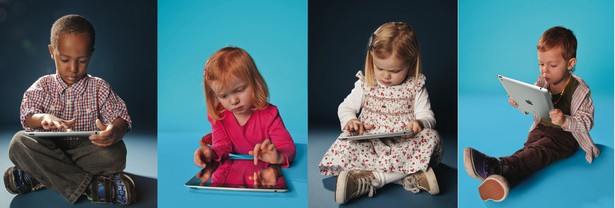
How 21st Century thinking is different…and what that means for kids and creativity
” In an era dominated by constant information and the desire to be social, should the tone of thinking for students be different?
This is the world of Google.
In this world full of information abundance, our minds are constantly challenged to react to data, and often in a way that doesn’t just observe, but interprets. Subsequently, we unknowingly “spin” everything to avoid cognitive dissonance.
As a result, the tone of thinking can end up uncertain or whimsical, timid or arrogant, sycophant or idolizing–and so, devoid of connections and interdependence. The internet and social media are designed to connect, and with brilliant efficiency they do indeed connect—words and phrases, images and video, color and light, but not always to the net effect they might.
The nature of social media rests on identity as much as anything else—forcing subjectivity on everything through likes, retweets, shares, and pins. Instead, we might consider constant reflection guided by important questions as a new way to learn in the presence of information abundance.
But this takes new habits. ” Terry Heick
Discover ways to make the most of 21st Century thinkers and read more from Terry Heick in this article from Teach Thought.
Daniel Pink: How the 21st Century Brain Affects Creativity
“According to Daniel Pink, the author of the New York Times best-selling Drive, the great shift of the early 21st century is from left to right. Rather than a political change, however, Pink’s shift is all about the brain. The 21st century, he argues, represents the triumph of our creative right brain skills over the more procedural thinking of our left brain.
So when I met with Pink on a rainy afternoon in Washington earlier this month, I began by asking him whether the new hegemony of right brain skills would represent a new golden age of creativity for both artists and ordinary people.” Andrew Keen
Check out this video from the Future of Creativity series originally posted at the HBR Blog Network.
The Touch Screen Generation
” On a chilly day last spring, a few dozen developers of children’s apps for phones and tablets gathered at an old beach resort in Monterey, California, to show off their games. One developer, a self-described “visionary for puzzles” who looked like a skateboarder-recently-turned-dad, displayed a jacked-up, interactive game called Puzzingo, intended for toddlers and inspired by his own son’s desire to build and smash. Two 30‑something women were eagerly seeking feedback for an app called Knock Knock Family, aimed at 1-to-4-year-olds. “We want to make sure it’s easy enough for babies to understand,” one explained.
The gathering was organized by Warren Buckleitner, a longtime reviewer of interactive children’s media who likes to bring together developers, researchers, and interest groups—and often plenty of kids, some still in diapers. It went by the Harry Potter–ish name Dust or Magic, and was held in a drafty old stone-and-wood hall barely a mile from the sea, the kind of place where Bathilda Bagshot might retire after packing up her wand. Buckleitner spent the breaks testing whether his own remote-control helicopter could reach the hall’s second story, while various children who had come with their parents looked up in awe and delight. But mostly they looked down, at the iPads and other tablets displayed around the hall like so many open boxes of candy. I walked around and talked with developers, and several paraphrased a famous saying of Maria Montessori’s, a quote imported to ennoble a touch-screen age when very young kids, who once could be counted on only to chew on a square of aluminum, are now engaging with it in increasingly sophisticated ways: “The hands are the instruments of man’s intelligence.”
Read more from Hanna Rosin in her article ‘The Touch Screen Generation‘ here.
See more about 21st Century Learners from the iPad Art Room here.
















